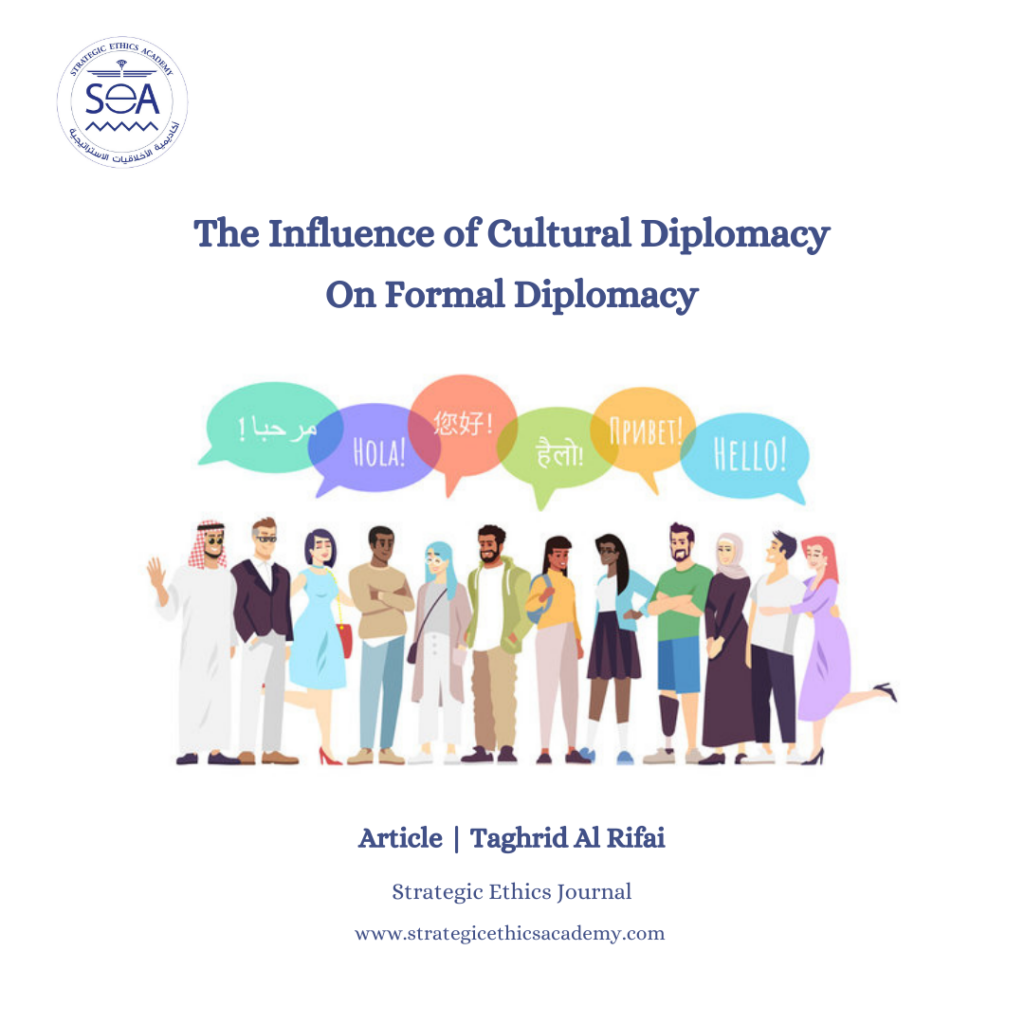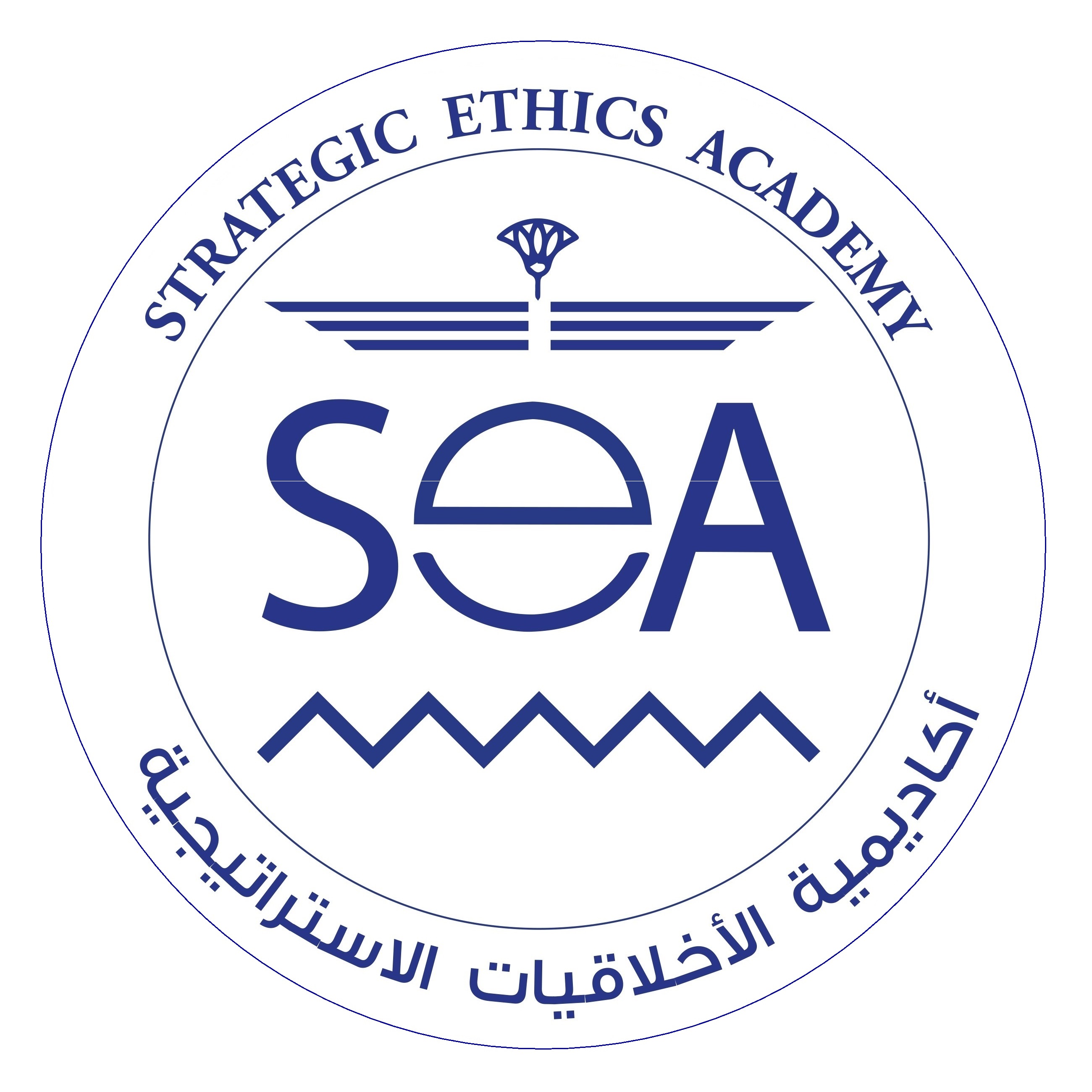
Article | Taghrid Al Rifai
Cultural diplomacy, which is frequently seen as the human aspect of international relations, has a vital role on formal diplomacy. Cultural exchanges help heal divisions that politics cannot heal by promoting cooperation, mutual understanding, and trust. This article examines how cultural diplomacy enhances and supplements conventional diplomatic practices using historical examples, contemporary applications, and personal reflections. Cultural diplomacy is a sophisticated tool to address today’s issues and lay the groundwork for enduring relationships between countries, from resolving conflicts to fostering international cooperation.
Introduction
At its core, diplomacy has always been about understanding people, cultures, and perspectives. Cultural diplomacy, which is defined as the exchange of ideas, values, and traditions between nations, is an influential soft power tool that adds to formal diplomacy. Whether through art, education, or shared traditions, it has the capacity to connect people in ways that formal channels often cannot. I have seen firsthand the transformative power of cultural diplomacy; in forums and programs where people from vastly different backgrounds come together, I have seen walls of misunderstanding disappear through simple acts of sharing—a meal, a story, or even a song. This article explores the ways in which these relationships have shaped formal diplomacy throughout history and continue to influence the political and social landscape of our increasingly interconnected globe.
Theoretical Foundations of Cultural Diplomacy
Joseph Nye’s conception of soft power—the capacity to influence others through attractiveness and shared goals as opposed to coercion or force—forms the basis of much of the academic understanding of cultural diplomacy (Nye, 2004). A key example of soft power is cultural diplomacy, which uses cultural assets to create narratives of mutual respect, goodwill, and understanding. It frequently acts as a springboard for official diplomatic discussions. However, taking into account modern notions like “nation branding” and “cultural hybridization” might enhance the conversation about cultural diplomacy. Nation branding is the study of how nations employ cultural diplomacy to improve their national identity and project a favorable image to the world. They frequently do this by influencing attitudes through cultural exports like technology, food, or art. Contrarily, cultural hybridization examines how cultures mix and converge in a world growing more interconnected by the day, giving rise to fresh, vibrant forms of cultural expression that have the power to both challenge and bring people together.
However, cultural diplomacy also entails the risk of maintaining power disparities or reiterating prejudices, as Edward Said (1978) reminds us through his idea of Orientalism. Cultural diplomacy can unintentionally turn into a tool for propaganda or cultural imperialism, in which dominant cultures force their beliefs on others, if it is not handled wisely. Prioritizing mutual respect and authenticity is essential to preventing this, making sure that cultural exchanges are founded on true understanding rather than exploitation.
Historical Context:
The roots of cultural diplomacy stretch back to ancient civilizations. The Silk Road, was a cultural link between Asia, the Middle East, and Europe in addition to being a trading route. In a similar vein, Renaissance royal courts frequently traded intellectuals and artists, encouraging communication and shaping official ties.
During the Cold War in the 20th century, cultural diplomacy gained greater importance. Cultural initiatives were employed by both the US and the USSR to spread their views and gain supporters. Art exhibits, literary exchanges, and jazz tours all evolved into instruments of influence that reduced political tensions and humanized countries (Cull, 2008).
Influence Mechanisms
There are several ways that cultural diplomacy functions, and each one adds something special to formal diplomacy:
- Developing Relationships and Trust in ways that formal channels cannot, cultural diplomacy cultivates trust, which is the cornerstone of diplomacy. For instance, despite political concerns, exchange programs such as the U.S.-China Fulbright Program have contributed to the development of Professional and professional and personal networks (Snow, 2016).
- Peacebuilding and Conflict Resolution in conflict-ridden areas, cultural diplomacy provides forums for communication. Daniel Barenboim and Edward Said formed the West-Eastern Divan Orchestra, which unites Israeli and Palestinian musicians and promotes tolerance and empathy via mutual musical expression (Rosenberg, 2012).
- Promoting National Objectives cultural diplomacy is a common tool used by nations to express their values and identity. Japan’s “Cool Japan” campaign, which promotes fashion, animation, and food, has improved its reputation internationally and bolstered its diplomatic and commercial ties (McGray, 2002).
- Promoting International Collaboration by emphasizing common human values, cultural diplomacy can help address global issues. For example, by highlighting our shared obligation to safeguard the world’s treasures, UNESCO’s cultural heritage programs foster collaboration.
Case studies
- Cultural Integration and the European Union. One example of how cultural diplomacy promotes unity is the EU’s Erasmus+ initiative. It has bolstered formal diplomatic attempts to resolve regional issues and enhanced European identity by facilitating cross-border educational exchanges (European Commission, 2020).
- The Use of Cultural Diplomacy by Qatar. In order to improve its reputation abroad and promote diplomatic relations, Qatar has made calculated investments in cultural projects such as the Doha Film Institute (Kamrava, 2013). This strategy emphasizes how culture might reduce geopolitical tensions.
- The Olympics: A Platform for Diplomacy. The Olympic Games serve as a platform for cultural diplomacy around the world. For example, during the 2018 Winter Olympics in South Korea, athletes from North and South Korea marched together, signifying optimism for reconciliation despite official diplomatic efforts (Lee,2018)
Personal Reflection
I have direct experience with the impact that international forums and cultural exchange programs have on formal diplomacy. I remember a program when people from historically tense countries gathered to talk about common issues. Formal discussions frequently came to a standstill, but cultural pursuits like storytelling and group art projects forged connections that made meaningful communication possible. These encounters highlight how crucial cultural diplomacy is in setting the stage for official talks. It serves as a reminder that diplomacy involves individual connections as much as governments.
Opportunities and Challenges
There are many opportunities for cultural diplomacy, such as promoting international cooperation on common issues like peacebuilding and climate change, boosting national soft power through cultural exports, and stimulating economic growth through closer ties in trade, entertainment, and tourism. Additionally, digital platforms are essential because they enable virtual interactions and online events that bring people together from all over the world, thereby broadening the scope of cultural exchanges. However, there are various problems, such as political resistance in politically sensitive places, cultural appropriation or misrepresentation, and securing regular funding for initiatives. The success of cultural diplomacy depends on striking a balance between these opportunities and the inherent challenges. Cultural diplomacy can also be abused as propaganda, which undermines its authenticity, and ethical issues with digital diplomacy, such as data privacy and shallow virtual engagements, further complicate its effectiveness.
Recommendations
- Integrate Cultural Diplomacy into Foreign Policy: Include cultural exchange initiatives as a fundamental part of diplomatic plans in order to optimize the effectiveness of cultural diplomacy.
- Put inclusivity First: Make sure cultural projects challenge preconceptions and represent a range of voices.
- Leverage Technology: To expand your audience and promote online interactions, make use of digital technologies.
- Assess Impact: To guarantee efficacy and genuineness, assess cultural diplomacy initiatives on a regular basis.
Conclusion
In contemporary international relations, cultural diplomacy is essential because it builds trust, settles disputes, and encourages collaboration, all of which enhance traditional diplomacy. Cultural diplomacy acts as a link between disparate cultures and opens doors for amicable cooperation as the world grows increasingly interconnected. It offers a human-centered approach to diplomacy, focusing on shared values and mutual understanding, in addition to tackling global issues like health problems and climate change. However, to be effective, cultural diplomacy must be rooted in truth and respect to avoid the risks of cultural appropriation or political manipulation. Done right, it has the power to create lifelong relationships, strengthen universal dialogue, and contribute to a more peaceful and inclusive world.
References
Cull, N. J. (2008). The Cold War and the United States Information Agency: American Propaganda and Public Diplomacy, 1945–1989. Cambridge University Press.
European Commission. (2021-2027). Erasmus+ programme. Retrieved from Erasmus+ funding programme – European Commission
Kamrava, M. (2013). Qatar: Small State, Big Politics. Cornell University Press.
Lee, J. H. (2018). The 2018 Winter Olympics: A Turning Point for Inter-Korean Relations. Journal of Peace Research, 55(4), 487-495.
McGray, D. (2002). Japan’s Gross National Cool. Foreign Policy, 130, 44-54.
Nye, J. S. (2004). Soft Power: The Means to Success in World Politics. Public Affairs.
Rosenberg, J. (2012). The West-Eastern Divan Orchestra: A Model for Reconciliation. Music and Arts in Action, 4(1), 23-36.
Said, E. W. (1978). Orientalism. Pantheon Books.
Snow, N. (2016). Propaganda, Inc.: Selling America’s Culture to the World. Seven Stories Press.
Taghrid Al Rifai
Double Master’s degree in International and Diplomacy Studies and Strategic Negotiations
PhD Candidate in Sustainable Development
Winner of the Outstanding Diplomat Award
About the Author:
Taghrid Al Rifai is a highly accomplished professional with extensive experience in humanitarian and development programs across Lebanon and the Middle East. She holds a double master’s degree in International and Diplomacy Studies and Strategic Negotiations, equipping her with the expertise to tackle complex global challenges. Throughout her career, Taghrid has been actively involved in formal and cultural diplomacy forums, honing her skills in international cooperation and cross-cultural exchange. Her contributions to diplomacy have earned her the prestigious Outstanding Diplomat Award, recognizing her dedication and impact in the field. Currently, she is pursuing a PhD in Sustainable Development, striving to leverage her knowledge and experience to drive innovative solutions that promote a more sustainable and resilient future.
